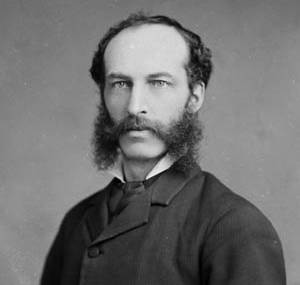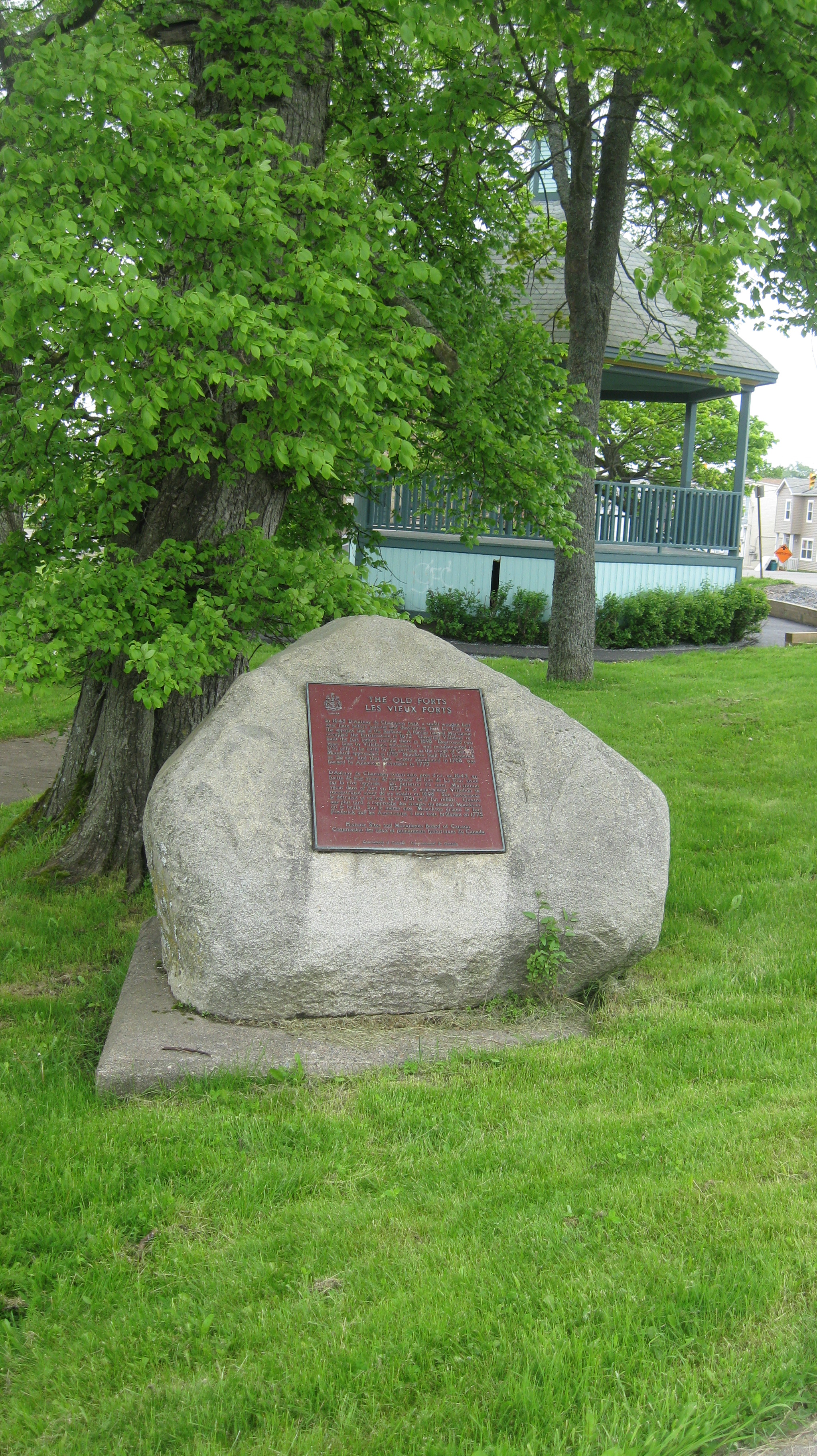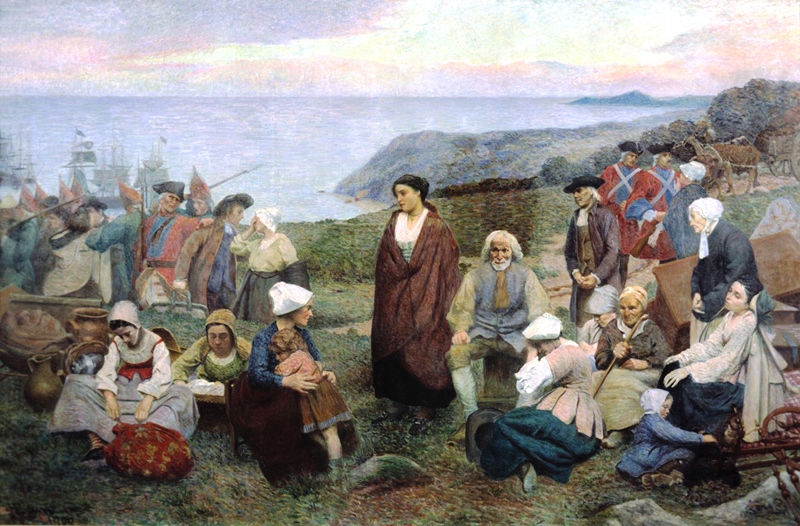|
Memramcook, New Brunswick
Memramcook, sometimes also spelled Memramcouke or Memramkouke, is a village in Westmorland County, New Brunswick, Canada. Located in south-eastern New Brunswick, the community is predominantly people of Acadian descent who speak the Chiac derivative of the French language. An agricultural village, it has a strong local patrimony, key to the history of the region. It was home to Mi'kmaqs for many years and was the arrival site of Acadians in 1700. A large part of these Acadians were deported in 1755, but the village itself survived. The Collège Saint-Joseph was the first francophone university in the east of Canada, which opened its doors in 1864 and hosted/organized the first National Acadian Convention in 1881. History Name Memramcook was called the "Berceau de l'Acadie", which translates to "cradle of Acadia". Long inhabited by the Mi'kmaq, the site saw the arrival of their allies, the Acadians in 1700.Arsenault, Bona, Histoire des Acadiens, Bibliothèque nationale du ... [...More Info...] [...Related Items...] OR: [Wikipedia] [Google] [Baidu] |
French Language
French ( or ) is a Romance languages, Romance language of the Indo-European languages, Indo-European family. Like all other Romance languages, it descended from the Vulgar Latin of the Roman Empire. French evolved from Northern Old Gallo-Romance, a descendant of the Latin spoken in Northern Gaul. Its closest relatives are the other langues d'oïl—languages historically spoken in northern France and in southern Belgium, which French (Francien language, Francien) largely supplanted. It was also substratum (linguistics), influenced by native Celtic languages of Northern Roman Gaul and by the Germanic languages, Germanic Frankish language of the post-Roman Franks, Frankish invaders. As a result of French and Belgian colonialism from the 16th century onward, it was introduced to new territories in the Americas, Africa, and Asia, and numerous French-based creole languages, most notably Haitian Creole, were established. A French-speaking person or nation may be referred to as Fra ... [...More Info...] [...Related Items...] OR: [Wikipedia] [Google] [Baidu] |
Cultural Heritage
Cultural heritage is the heritage of tangible and intangible heritage assets of a group or society that is inherited from past generations. Not all heritages of past generations are "heritage"; rather, heritage is a product of selection by society. Cultural heritage includes cultural property, tangible culture (such as buildings, monuments, landscapes, archive materials, books, works of art, and artifacts), intangible heritage, intangible culture (such as folklore, traditions, language, and knowledge), and natural heritage (including culturally significant landscapes, and biodiversity).Ann Marie Sullivan, Cultural Heritage & New Media: A Future for the Past, 15 J. MARSHALL REV. INTELL. PROP. L. 604 (2016) https://repository.jmls.edu/cgi/viewcontent.cgi?article=1392&context=ripl The term is often used in connection with issues relating to the protection of Indigenous intellectual property. The deliberate action of keeping cultural heritage from the present for the future is known ... [...More Info...] [...Related Items...] OR: [Wikipedia] [Google] [Baidu] |
Dieppe, New Brunswick
Dieppe () is a city in the Canadian maritime province of New Brunswick. Statistics Canada counted the population at 28,114 in 2021, making it the fourth-largest city in the province. On 1 January 2023, Dieppe annexed parts of two neighbouring Local service district (New Brunswick), local service districts; revised census figures have not been released. Dieppe's history and identity goes back to the eighteenth century. Formerly known as Leger's Corner, it was incorporated as a town in 1952 under the Dieppe name, and designated as a city in 2003. The Dieppe name was adopted by the citizens of the area in 1946 to commemorate the Second World War's Operation Jubilee, the Dieppe Raid of 1942. It is officially a francophone city; with 63.8% of the population mother tongue French, 24% English, 3% French and English, 8% other. A majority of the population reports being bilingual, speaking both French and English. Residents generally speak French with a regional accent (colloquially c ... [...More Info...] [...Related Items...] OR: [Wikipedia] [Google] [Baidu] |
Joseph Frye
Joseph Frye (March 19, 1712 – July 25, 1794) was a military leader from colonial Massachusetts. Life Born in Andover, Massachusetts, he obtained the rank of general in the Massachusetts militia after serving in King George's War and the French and Indian War. During the latter conflict, under the command of Edward Winslow, Frye helped build Fort Halifax in present-day Maine and then participated in the Battle of Fort Beauséjour and the Battle of Petitcodiac. He reported to have barely escaped with his life from a French-allied Native massacre of British forces after having surrendered Fort William Henry. He was commander at Fort Gaspareaux. He was present on Lake George in August 1757 at the Siege of Fort William Henry. Then he returned to Nova Scotia and took command of Fort Cumberland. He served in the 2nd General Assembly of Nova Scotia in 1759–1760, representing Cumberland Township. For services during that conflict, the Massachusetts General Court in 1762 ... [...More Info...] [...Related Items...] OR: [Wikipedia] [Google] [Baidu] |
Miramichi, New Brunswick
Miramichi ( ) is the largest city in northern New Brunswick, Canada. It is situated at the mouth of the Miramichi River where it enters Miramichi Bay. The Miramichi Valley is the second longest valley in New Brunswick, after the Saint John River (Bay of Fundy), Saint John River Valley. On 1 January 2023, Miramichi annexed parts of two Local service district (New Brunswick), local service districts on its northern border; revised census information has not been released. Neighbourhoods The city of Miramichi was formed in 1995 through the forced Municipal amalgamations in New Brunswick, amalgamation of two towns, Newcastle, New Brunswick, Newcastle and Chatham, New Brunswick, Chatham, and several smaller communities, including Douglastown, New Brunswick, Douglastown, Loggieville, New Brunswick, Loggieville, and Nelson-Miramichi, New Brunswick, Nelson. Also the local service districts of Nordin, New Brunswick, Nordin, Moorefield, New Brunswick, Moorefield, Chatham Head, New Brunsw ... [...More Info...] [...Related Items...] OR: [Wikipedia] [Google] [Baidu] |
Charles Deschamps De Boishébert Et De Raffetot
Charles Deschamps de Boishébert (also known as Courrier du Bois, Bois Hebert) was a member of the Compagnies Franches de la Marine and was a significant leader of the Acadian militia's resistance to the Expulsion of the Acadians. He settled and tried to protect Acadians refugees along the rivers of New Brunswick. At Beaubears National Park on Beaubears Island, New Brunswick he settled refugee Acadians during the Expulsion of the Acadians. King George's War Siege of Annapolis Royal From October until 3 November 1746, Boishebert took part in the unsuccessful Siege of Annapolis Royal, Nova Scotia (N.S.), the British administrative and military headquarters in Acadia. Battle at Port-la-Joye After the first Siege of Louisbourg in May–June 1745, a British force composed largely of New England irregulars proceeded to seize Île Saint-Jean (present day Prince Edward Island) and its capital Port-la-Joye, which had a French garrison consisting of about 15 soldiers and 10 ... [...More Info...] [...Related Items...] OR: [Wikipedia] [Google] [Baidu] |
Acadiens
The Acadians (; , ) are an ethnic group descended from the French who settled in the New France colony of Acadia during the 17th and 18th centuries. Today, most descendants of Acadians live in either the Northern American region of Acadia, where descendants of Acadians who escaped the Expulsion of the Acadians (a.k.a. The Great Upheaval / ''Le Grand Dérangement'') re-settled, or in Louisiana, where thousands of Acadians moved in the late 1700s. Descendants of the Louisiana Acadians are most commonly known as Cajuns, the anglicized term of "Acadian". Acadia was one of the five regions of New France, located in what is now Eastern Canada's Maritime provinces, as well as parts of Quebec and present-day Maine to the Kennebec River. It was ethnically, geographically and administratively different from the other French colonies such as the French colony of Canada. As a result, the Acadians developed a distinct history and culture. The settlers whose descendants became Acadians p ... [...More Info...] [...Related Items...] OR: [Wikipedia] [Google] [Baidu] |
Chipoudy
Shepody is a rural community in southeastern New Brunswick, Canada, situated on Shepody Bay, along Route 114 between Hopewell Hill and Lower Cape to the east. Shepody or also distinguishes the area corresponding to the French period Acadian settlement, which populated both sides of the River by the same name, with its centre located north of the estuary at today's Hopewell Hill. The name, which legend has it originates in Champlain's visit to the bay, is used in reference to places in both Westmorland and Albert county territorial divisions. Shepody is a short distance west of the former Acadian settlement centre, and has a population of approximately twenty. History Following the breakup of the principal grant of land (Hopewell Township, Cumberland County, Nova Scotia), settlement in the areas gained pace. As the Hopewell communities advanced, Shepody, NB became distinct from Hopewell in the early 20th century, while Hopewell became Hopewell Hill. French Period By 1701, ... [...More Info...] [...Related Items...] OR: [Wikipedia] [Google] [Baidu] |
Petitcodiac, New Brunswick
Petitcodiac (, sometimes shortened to ) is a former village in Westmorland County, New Brunswick, Canada. It held village status prior to 2023 and is now part of the village of Three Rivers. History It is named after the Petitcodiac River, which begins in the village at the junction of the North River and Anagance River. The name is believed to be derived either from a Mi'kmaq word meaning "bends like a bow" or from a Maliseet word meaning "sound of thunder". Petcoucoyee (Franquelin, 1686); Pacoudiac (deCouagne, 1749); present spelling from mid 19th century. On 1 January 2023, all or parts of four local service districts were annexed to Petitcodiac as part of the 2023 local governance reforms to establish a new village named Three Rivers. The community's name remains in official use. Present day The Community Centres around Route 890, Route 885, Route 905, Route 106 and Route 1. The village features a regional school, an outdoor swimming pool, an arena, a bow ... [...More Info...] [...Related Items...] OR: [Wikipedia] [Google] [Baidu] |
Beaubassin
Beaubassin was an important Acadian village and trading centre on the Isthmus of Chignecto in what is now Nova Scotia, Canada. The area was a significant place in the geopolitical struggle between the British and French empires. It was established in the 1670s on an upland close to an extensive area of saltwater marsh. Settlers reclaimed the land to engage in cattle ranching and trade. French colony The settlement had strong ties with Port Royal, and Jacques Bourgeois, a farmer, shipbuilder, and merchant at sold a part of his holdings there to settle in the Chignecto Basin, where he built a flour-mill and a saw-mill. Around the same time Michel Leneuf de la Vallière de Beaubassin set up a fur-trading post on the isthmus, while devoting part of his time to the fishing, farming, settlement, and soldiering. Following success in the latter activity, in 1676 governor Frontenac granted him 100 square leagues land which became the Beaubassin seigneury. He established himself on ... [...More Info...] [...Related Items...] OR: [Wikipedia] [Google] [Baidu] |
England
England is a Countries of the United Kingdom, country that is part of the United Kingdom. It is located on the island of Great Britain, of which it covers about 62%, and List of islands of England, more than 100 smaller adjacent islands. It shares Anglo-Scottish border, a land border with Scotland to the north and England–Wales border, another land border with Wales to the west, and is otherwise surrounded by the North Sea to the east, the English Channel to the south, the Celtic Sea to the south-west, and the Irish Sea to the west. Continental Europe lies to the south-east, and Ireland to the west. At the 2021 United Kingdom census, 2021 census, the population was 56,490,048. London is both List of urban areas in the United Kingdom, the largest city and the Capital city, capital. The area now called England was first inhabited by modern humans during the Upper Paleolithic. It takes its name from the Angles (tribe), Angles, a Germanic peoples, Germanic tribe who settled du ... [...More Info...] [...Related Items...] OR: [Wikipedia] [Google] [Baidu] |
Memramcook River
The Memramcook River is a river located in Westmorland County, in southeastern New Brunswick, eastern Canada. Geography Its meander length is approximately , of which approximately is a tidal estuary to its discharge point into the Petitcodiac River. See also *Memramcook, New Brunswick * Petitcodiac Riverkeeper * Shepody Bay *Bay of Fundy The Bay of Fundy () is a bay between the Canadian provinces of New Brunswick and Nova Scotia, with a small portion touching the U.S. state of Maine. It is an arm of the Gulf of Maine. Its tidal range is the highest in the world. The bay was ... References Rivers of New Brunswick Landforms of Westmorland County, New Brunswick {{WestmorlandCountyNB-geo-stub ... [...More Info...] [...Related Items...] OR: [Wikipedia] [Google] [Baidu] |









